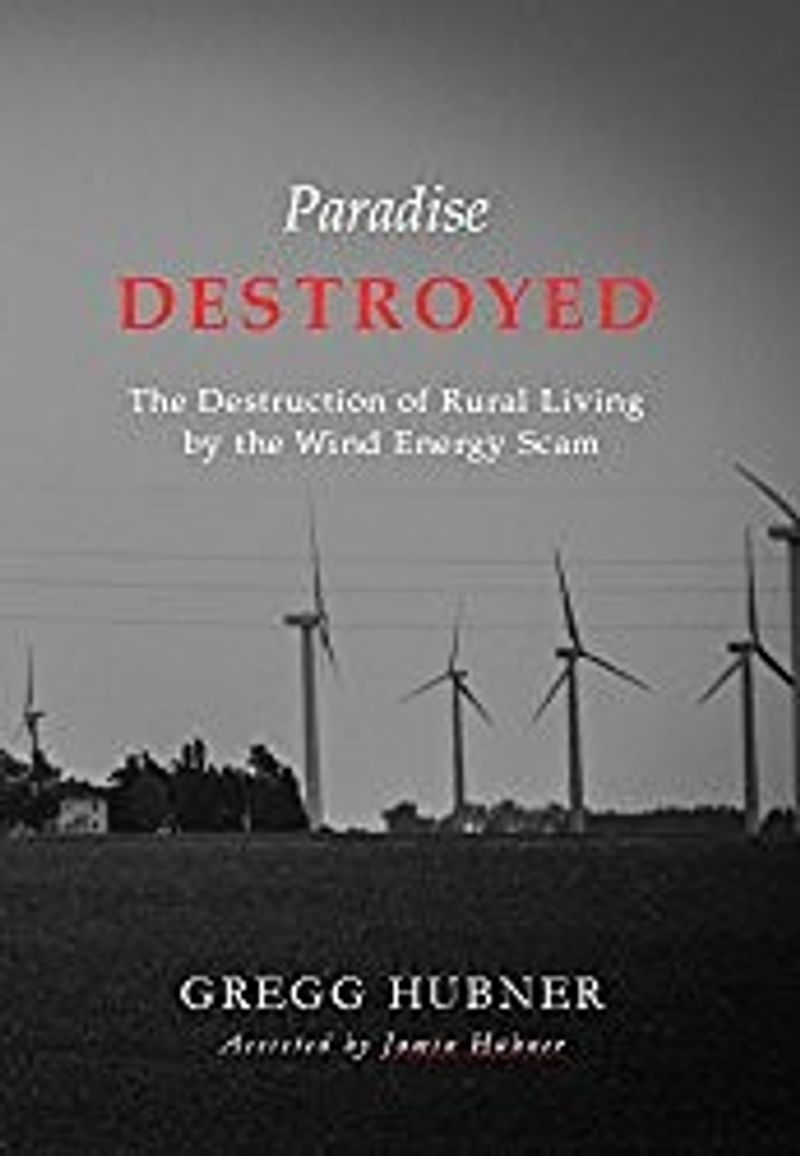
THE REAL TRUTH ON INDUSTRIAL WIND PROJECTS: ((( They are not AGRICULTURE and they are not FARMS.)))
THE REAL TRUTH ON INDUSTRIAL WIND PROJECTS: ((( They are not AGRICULTURE and they are not FARMS.)))
THE DECEIT GOES ON AND SO DOES THE FIGHT
As you know in 2017 my son and I wrote “Paradise Destroyed” The Destruction of Rural Living by the Wind Energy Scam. It’s been a long 5 years, and as I look out my office window I can count 13- 600 ft. wind turbines, as ugly, noisy and loaded with infrasound as you can imagine. This past week we had grandkids and my granddaughter and I were in the sun room closest to the nearest wind turbine, about 4950 ft. away. She was only in the room a few minutes when she said “Grampa, my ears are really ringing”. We left to find a better spot. My wife and I have been sleeping in the basement since the turbines started to turn a couple years ago. Our neighbors are suffering also, but you only learn about their hardships through their friends or relatives, as most of them signed up and dare not speak too loudly about the negative effects, or Big Wind will sue them and take their farm in lawyer fees. On the other hand, I sent 200 copies of “Paradise Destroyed” to Kansas this month. They have one state legislator that has come out against this scam. If you don’t believe it’s a scam, ask people that live in a Industrial Wind Project. Ask them how rich they got? Ask them how many new jobs are in town, how many new kids in school? Ask them about their electric rates. Ask them if they are bothered by the infrasound? Most people that sign up get ZERO towers, they were promised many but for some reason they didn’t get a one. But they signed a contract that forbids them from complaining. I see Germany is going back to Coal. They can’t stand the increased rates and unreliability of so called renewables. The whole thing is a SCAM perpetrated by the global elite to enrich themselves and get the property rights to your land. gch
www.sdsrree.org
OUR MISSION
To raise awareness and provide resources to educate the public and government representatives on industrial wind energy’s real impacts including health issues, the environment, property values, wildlife and our overall quality of life.


